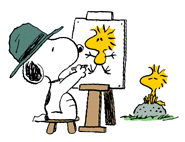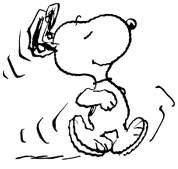
1. List ten (10) rules for handling works of art.
1. Do not touch the front or back of a painting. Never allow any
object to rest, however lightly, against either
surface.
2. Never apply tape or adhesive to either the front of the back of
a painting or to the visible parts of its
frame.
3. Do not carry paintings by one side. Grip the painting with one
hand beneath and one hand on the side of the frame, or with one hand on either
side.
4. Hold painting at points where the frame is strong, never on
fragile gesso decoration.
5. Never insert your fingers between the stretcher bar and the back
of the canvas. This can do serious damage to the paint
surface.
6. Carry unframed paintings by grasping only the inner and outer
edges of the stretcher bar, not the broader sides parallel to the
canvas
7. Always move paintings with their surfaces vertical and store the
same way.
8. If you need to carry a painting through a closed door, be sure
an extra handler is along to open and hold the door for
you.
9. Carry large paintings as close to the floor as possible without
striking door sills or placing yourself in a clumsy
poison.
10. Carry wrapped paintings with extra care and do not set
paintings down balanced by one corner on the floor and one in your
hand.

Define the following terms used in describing the Condition of Art Objects.
1. Abrasion: one type of erosion; a surface loss assumed to be caused by friction on the varnish, paint or ground in a painting, on the design material or the support of a drawing or print, on the finish of furniture, sculpture or other objects. Also called SCRAPE, WEAR, RUB.
2. Blanching: Irregular, obtrusive, pale or milky areas in paint or varnish; not a superficial defect like BLOOM, but a scattering of light from microporosities or granulation in aged films.
3. Bloom: Superficial surface cloudiness, white or blue white, caused by moisture penetrating a surface coating of varnish.
4. Check: A rupture in
wood along the grain and less than the length of the piece, usually caused by
the accelerated drying of wood at the exposed end grain (cf.
5. Buckling: Buckled cleavage; one type of laminal disruption in which loosened layers take a conformation of gablelike ridges (also called TENTING). These ridges may combine parallel and perpendicular disruption and may be caused by compressive forces underneath the laminae. They are recognized by contour and by sonancy.
6. Cockling: A broad wrinkle or system of wrinkles without creasing, usually referring to the conformation of paper or parchment.
7. Crack: A fracture of fissure in any surface, especially a paint film. No loss is implied.
8. Alligator Crackle: Traction crackle; “alligator” pattern of crackle produced by shrinkage forces in a rapidly drying upper layer, lying over a slow drying plastic layer. The pattern of traction crackle is a characteristic complex branching, and the apertures are frequently wide and disfiguring.
9. Dent: dig, gouge, chip; A defect in the surface, caused by a blow. A dent is simple concavity; a dig implies that some material has been displaced; a gouge that material has been scooped out; a chip that material has been broken away.
10. Draw: A wrinkle or system of wrinkles in stretched fabric, radiating from corners or edges, usually caused by uneven tension. Corner draws may also be caused by various stretcher defects, especially DISHING (q.v.).
11. Fading: A discoloration with loss of chroma and usually with change to a higher value; a change of hue may also occur. It is evident particularly in textiles where parts, such as seas, have been protected from light.
12. Flake: A portion of a lamina isolated and bound by fissures. Flakes may have profiles (sections) that are flat, rimmed, convex or concave. Also called SLAND.
13. Foxing: Yellow or brown spots on paper, or occasionally pale spots on toned paper, which follow the degradation of cellulose by mold. Similar brown spots are sometimes caused by the rusting of iron particles in the paper.
14. Soil: A general term denoting any material that dirties, sullies or smirches an object.
16. Dust: Loose soil generally distributed on surfaces.
17. Stain: A discoloration that usually darkens the substance of an artifact in streaks or spots. Its appearance depends on the contacting material.
18.
19. Stretcher crease: A crease or line of CRACKS in the ground and paint layers of a painting on fabric, following the inside edges of stretcher members or the edges of cross-members. It is caused by the flexing f the fabric against the edges of these members.
20. Tear: A break in
fabric, paper or other sheet material as a result of tension or
torsion.

Description of hanging method
Describe the method for hanging a 20”x 20” painting in the gallery,
the painting has a wire on the back of the painting that is drawn tight at 4”
from the top of the frame at .2 points 12” apart, the painting should be
centered at 58” and is placed in its location by the curator. You may use
drawings to indicate your methods and show all your mathematical
calculations.
1. Measure width of artwork and mark the midpoint on masking tape
on the wall.
2. Do not work over artwork move artwork to the
side
3. Measure height of artwork (20”)
4. Determine average eye height of visitors
(58”)
5. Measure distance from top of frame to bottom of hanging device
(4”)
6. Add eye height of visitors (58”) to 1/2 of the height of the art
work (10”) This will give you the height of the top of the frame. Subtract from
this number the distance from the top of the frame to the bottom of the hanging
device (4”) (maybe wire or the stretcher bar.) This will give you height from
the floor of the hangers, nails or screws. We always use two hangers to keep
artwork level.
58”+ 10”– 4”= 64”
7. Transfer the position of the midpoint of the artwork to this
height (64”)
8. Mark the positions of the hanger (6” both sides from the
midpoint), nail or screw and install.
12”x 1/2 = 6”
9. Install the artwork on the hangers, nails or screws. Use two
people if necessary.

'Blue > e—art—exhibit' 카테고리의 다른 글
| Christo (0) | 2004.06.06 |
|---|---|
| “Out of the Blue” by Arlene Shechet (0) | 2004.06.01 |
| “L.A. Woman” (0) | 2004.05.20 |
| 작품은 어디 있죠? (0) | 2004.05.11 |
| 일상의 연금술전 Alchemy of Daily Life (0) | 2004.05.09 |



